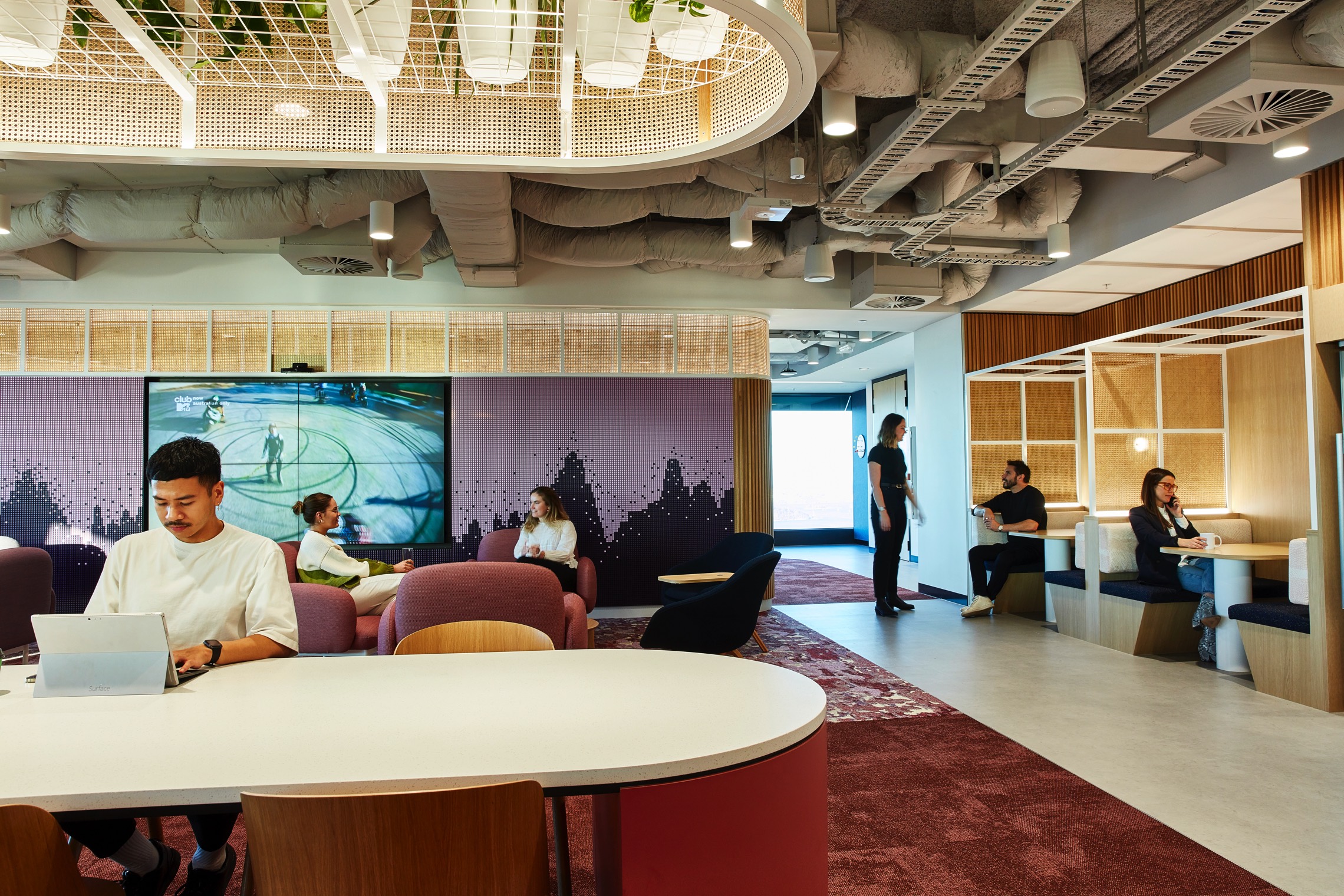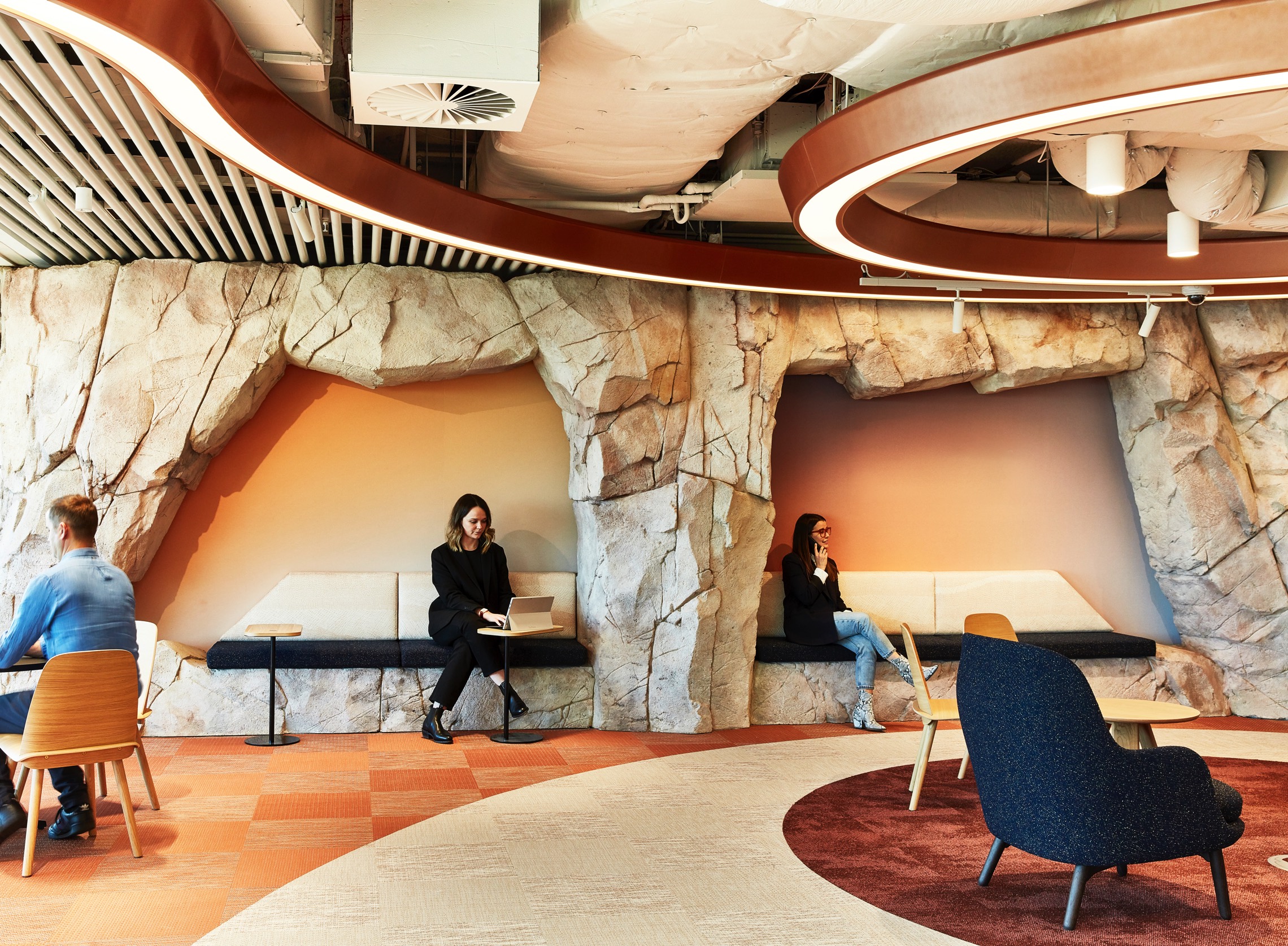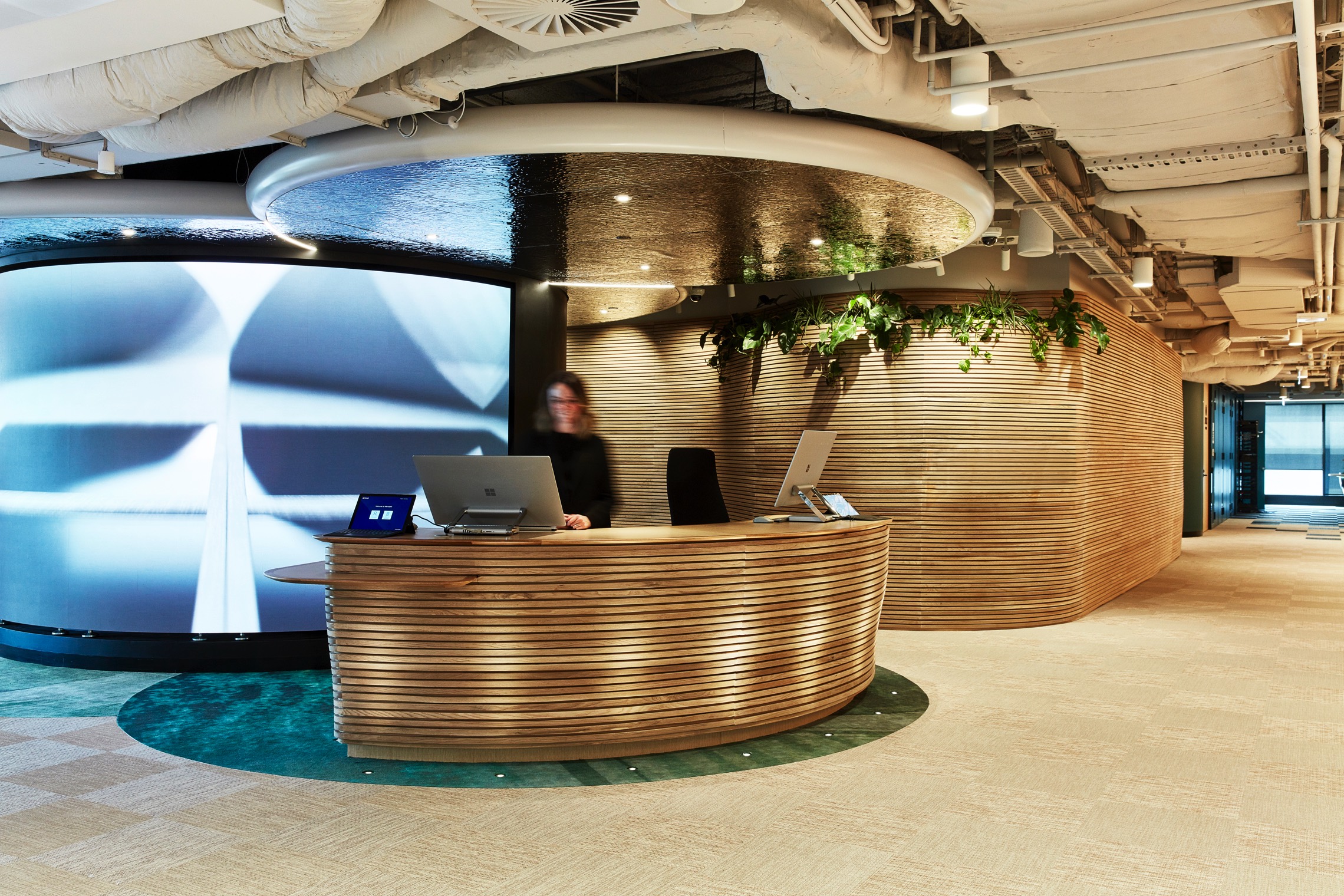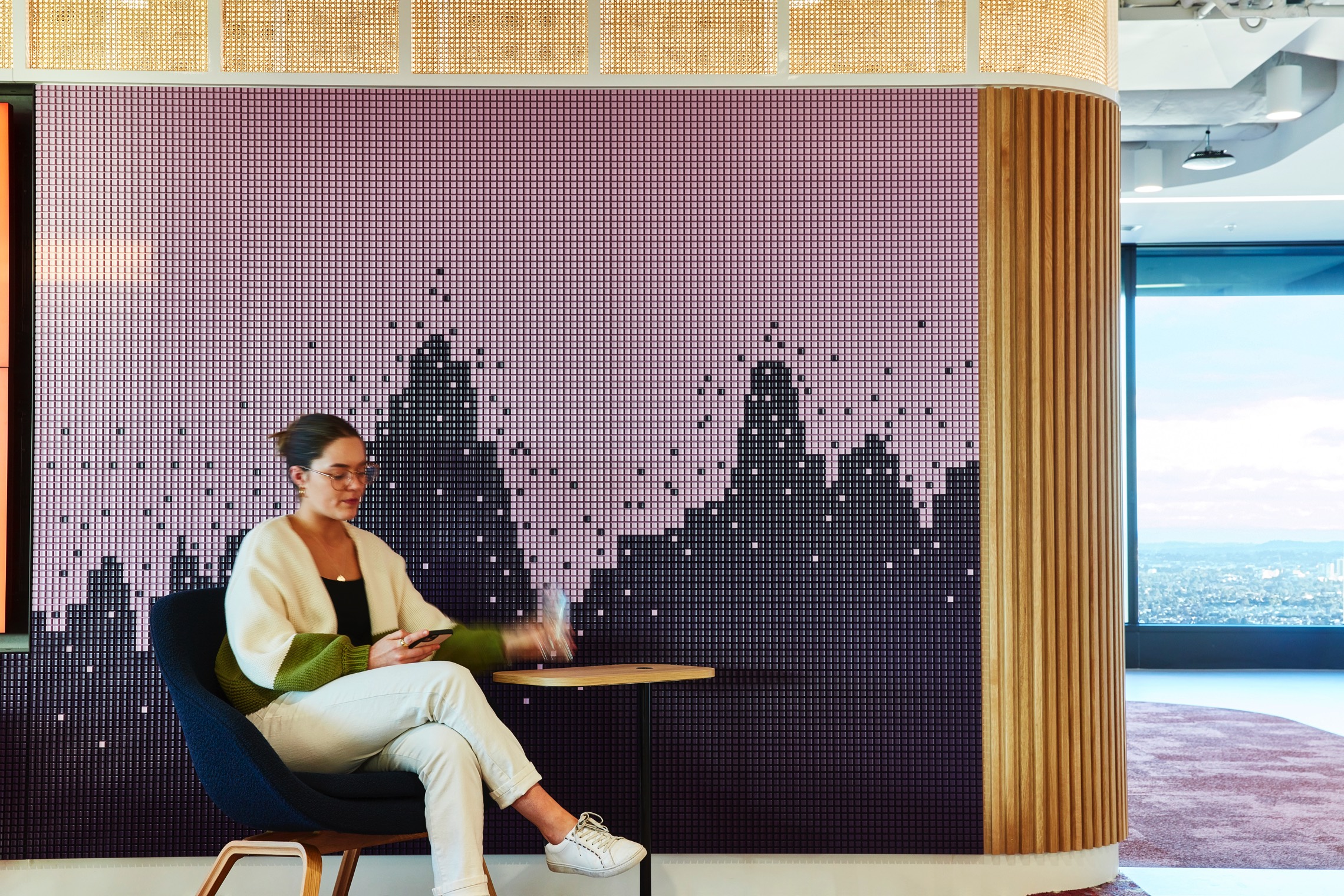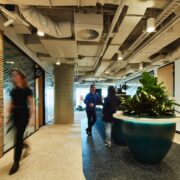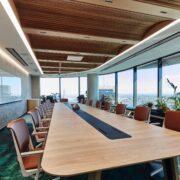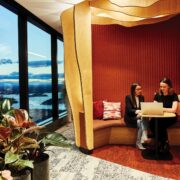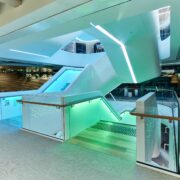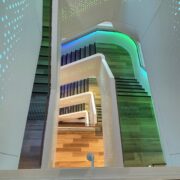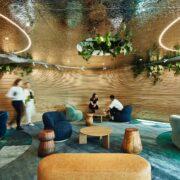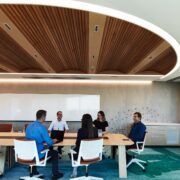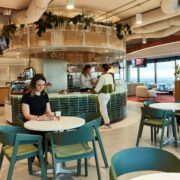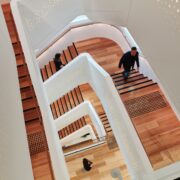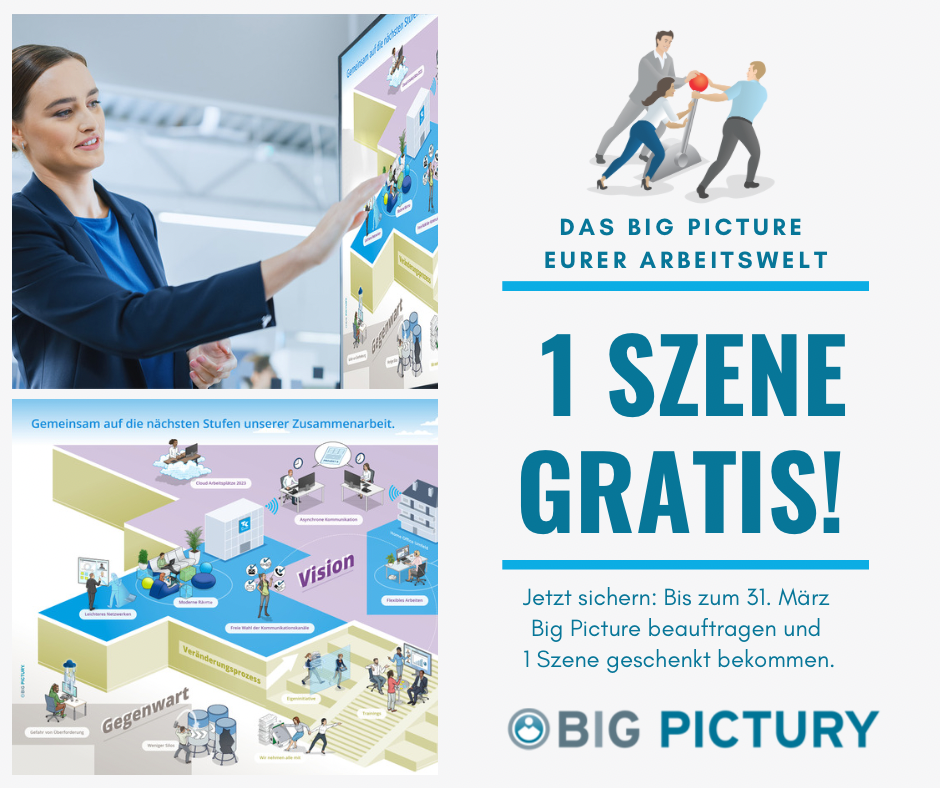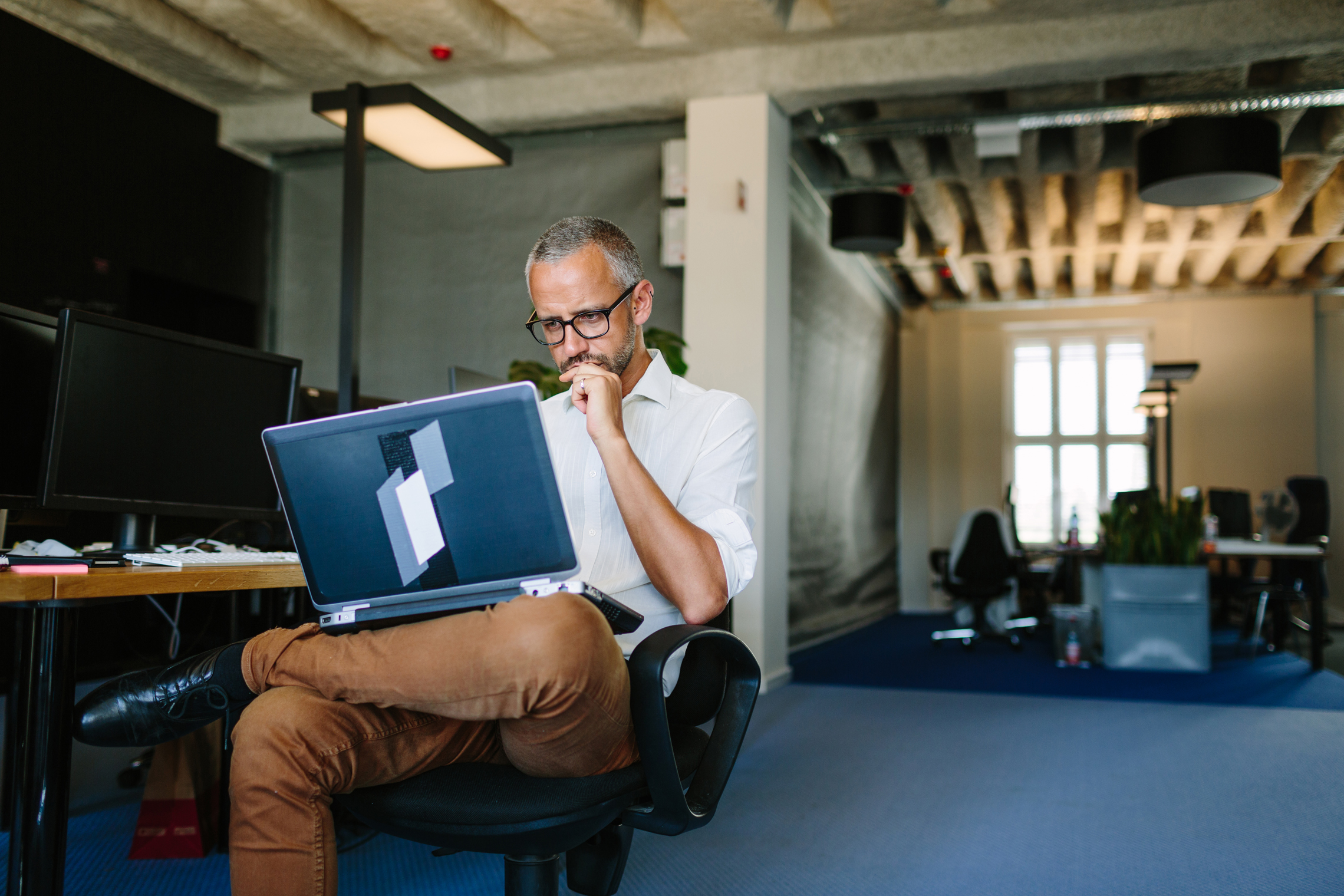What Microsoft’s new flagship ANZ office says about the future of workplace design
As the pandemic forces organisations to rethink the role of the office, Microsoft has unveiled its new, cutting-edge ANZ flagship office in North Sydney.
More than 1400 Microsoft employees will operate from 1 Denison St — North Sydney’s tallest and smartest tower — in a move that consolidates the tech giant’s North Ryde, Oxford St and WeWork offices in Sydney’s CBD.
The new headquarters, designed by global design studio GroupGSA, sets a new benchmark for hybrid workplaces in Australia. Spanning 10,000sqm across seven levels, the workspace goes against the conventional norms of office design. Collaboration powered by advanced technology allows for flexible work — whenever, wherever.
Microsoft head of Real Estate and Facilities in Asia Pacific, Ashish Mehrotra, says COVID-19 has taught businesses that distance is no longer a barrier to connectivity, engagement, and productivity. Nor is it a barrier to having a thriving company culture.
“Our new space at 1 Denison St breaks the traditional mould of what an office can and should be,” he says. “This is clearly shown in the design of the new space, where remote and in-person workers are on equal footing.”
Treading new terrain
Microsoft’s new office reimagines some of Australia’s most iconic landscapes. Unlike conventional workplaces where areas of work are automatically given away, GroupGSA Principal and project lead Pablo Albani says the design takes Microsoft employees on a journey to discover their desks and meeting spaces.
“To get to the areas of work, you have to traverse different elements, like enclosed and semi-enclosed spaces, cave-like environments and tunnels of greenery,” he says.
Natural landmarks that imbue awe and wonder — where natural phenomena take place — are referenced throughout. GroupGSA Associate Director and lead designer, Jessica Margiotta, says this is conceptually linked with Microsoft’s brand values. A distinctive rock wall simulates Cradle Mountain, while Sydney’s famous Figure Eight Pools inspire the customer floor on Level 28.
A parametrically designed, undulating timber wall — symbolic of the Royal National Park — stretches from one end of Level 28 to the other, wrapping the visitor reception area. There’s no visible branding, but it is clear, as a customer, you have arrived.
Design cues are representative of the curvature of the rock pools. The water’s ripple effects are reflective on the Rimex ceiling, while other surfaces embody the shimmer of Australian beaches.
“As people walk in, we want them to be fully immersed — in the brand and in the environment,” Margiotta says. “There is a pleasant surprise every time you turn a corner. Microsoft staff will have a constant sense of discovery and will continue to uncover small details that add a layer of storytelling over the course of their working experience.”
Nature meets technology
The biophilic design evokes a connection back to nature while balancing heavily integrated technology. Intelligent lighting, robotics and advanced workplace occupancy sensors linked to Microsoft platforms are a key part of Microsoft’s hybrid office experience.
GroupGSA used Microsoft technology to help their clients envision the space before construction even began. “We were working with Microsoft’s own VR and HoloLens technology — designing in 3D and then applying augmented reality — for our clients to experience the space without it being built,” Albani says.
A monolithic Corian-clad staircase with built-in LEDs cantilevers into the void between the seven floors, encouraging connectivity and collaboration. The LED lighting is reactive and responsive to the surroundings. “The stairs can be programmed to change colour for themed events, like International Women’s Day, or can link to sensors in the building to reflect activity,” Margiotta explains. “The lighting can intensify if there is lots of people on the floor. It has the ability to react to the weather. If there's a thunderstorm it can reflect what's happening in the environment outside. It can also be programmed to react to what is taking place at Microsoft globally.”
The fit-out includes smart office sensors and digital whiteboards to allow employees to contribute in a way that best suits them. The 1 Denison App allows employees to book amenities, such as rooms and smart lockers. They can also use the app to order and pay for food, book a massage or schedule a barre or yoga class at the building’s wellness centre, The Nest. Modern maintenance facilities include cleaning robots which traverse the floors.
“We know that employees still want and need a physical space to come together and connect,” Mehrotra says. “An open space, concierge at arrival, communal dining area, an onsite barista, and grab-and-go food options prompt people to meet, eat, collaborate, and socialise. There are also areas for board games and flex spaces that adapt to varying purposes or sports watching nights.”
Wellness at work
Half of Level 28’s floorspace is dedicated to staff amenities and functions, including a live stream room, Xbox gaming room, a recording studio, dedicated meditation and yoga spaces, a library and parents’ room. There are two ‘nap suites’, prayer rooms and a leisure hub for employees to have a game of pool or ping pong.
Mehrotra says each floor has different work areas to suit employees’ diverse needs. “They can choose quiet corners for solo work, comfortable sofas for informal meetings, and reservable meeting rooms for more involved sessions,” he says. “Team neighbourhoods, screened-in workshop areas, touch-down desks, sound-proofed phone booths, and conversation rooms all work together to support today’s mobile workforce.”
The dedicated workfloors, with elevated views of Sydney harbour, continue the storytelling. On Level 26, indistinct way-finding is inlaid on the floor that imitates the typography of the Blue Mountains. Timber floor linings and a feature ceiling is inspired the Australian “verandah” and farm sheds. Interactive walls near the lifts are reminiscent of indigenous dot paintings — but movable. There are subtle ties to Australia everywhere.
The fit-out’s COVID-19 response includes a minimum of 1.5m spacing at all work points, hand sanitation stations and no-touch automatic door operation using swipe controls.
Margiotta says tech companies, like Microsoft, need their talent to be constantly stimulated, future-focussed and pushing boundaries. Key to this is good workplace design.
“Microsoft’s new flagship office in Australia changes the perspective on what a workspace is and how it functions,” she says. “The result is a workplace design that inspires its employees to create the extraordinary.”
